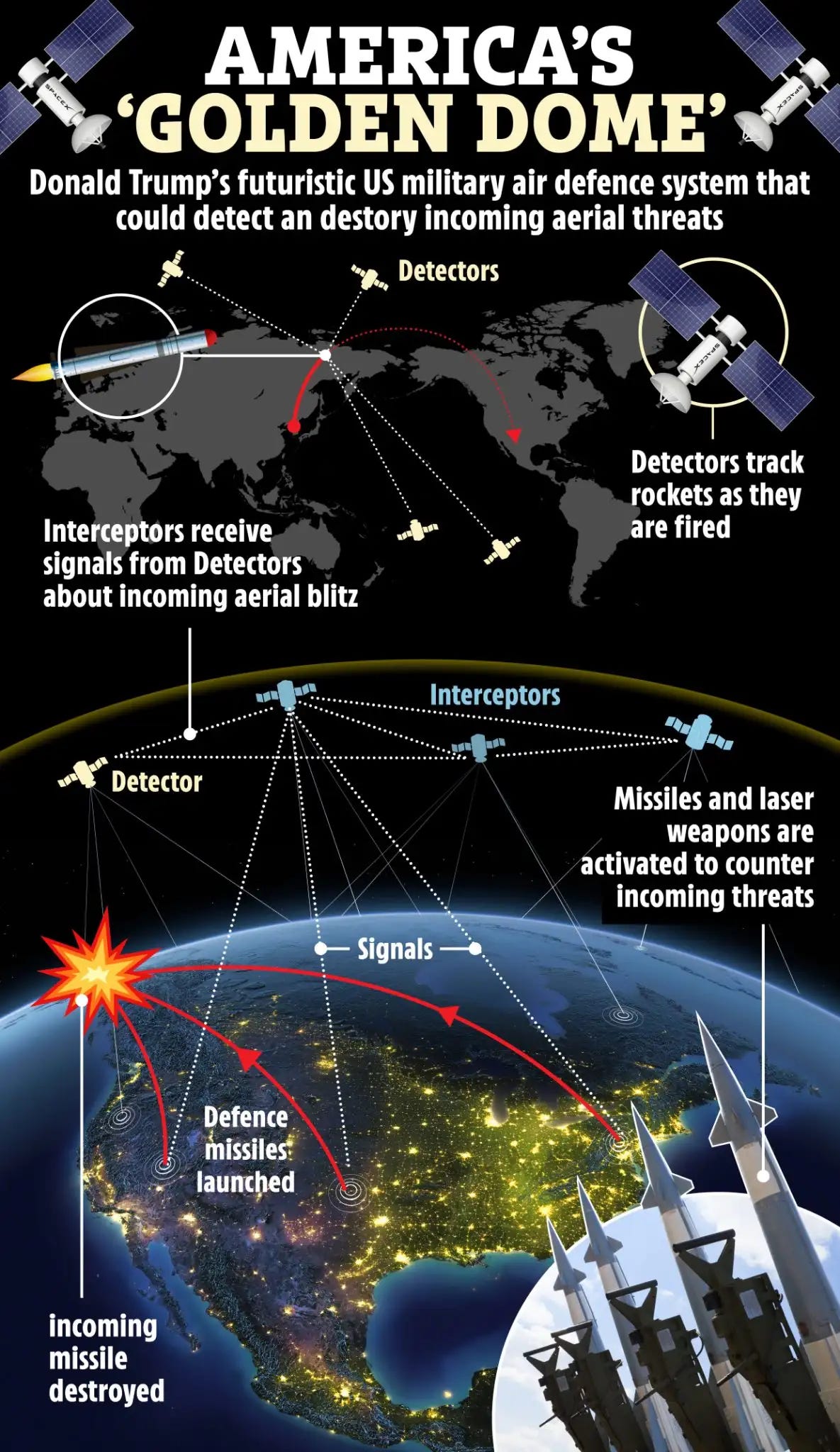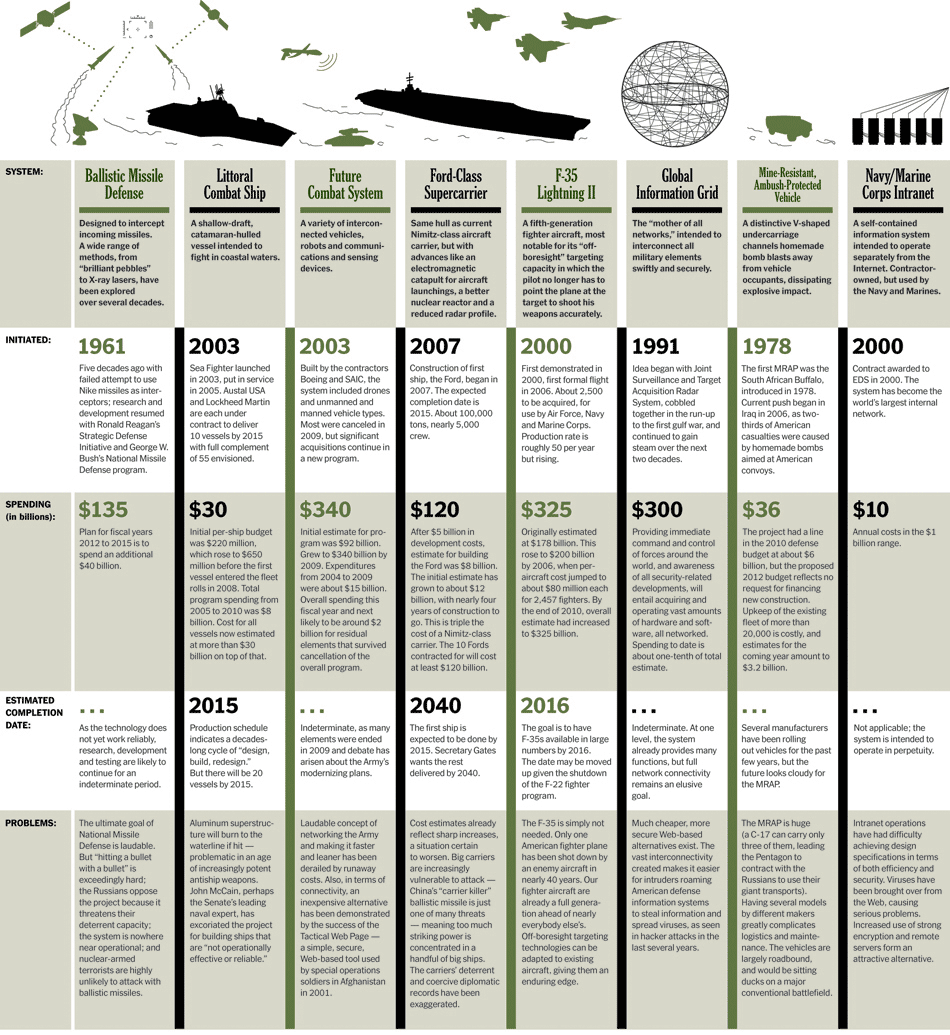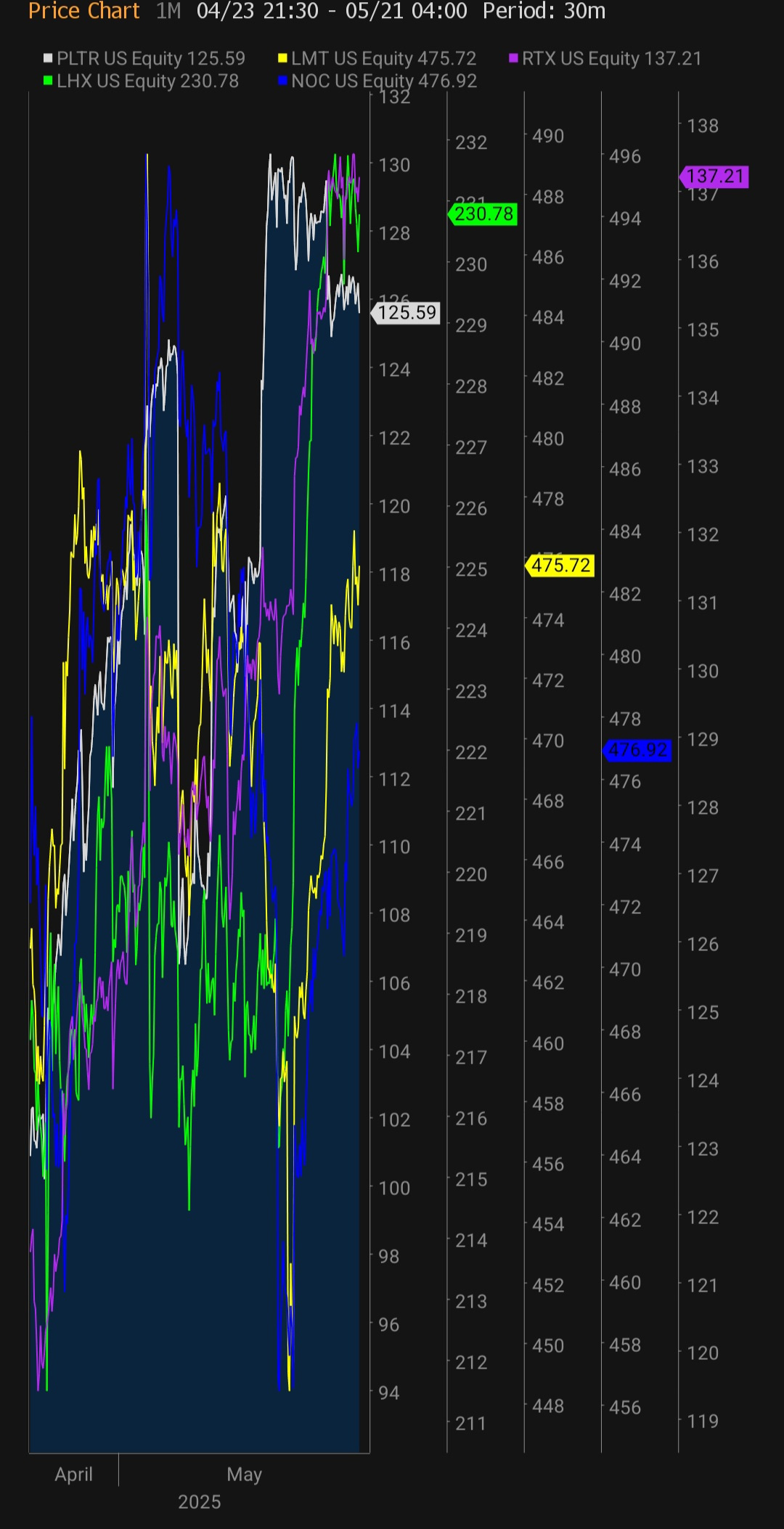Trump's Golden Dome Missile Defense System - A Golden Opportunity or a Gilded Risk? 🚀
Thoughts (Not Advice)
Hi Team,
Not our usual snark and sarcasm on this one as it is a topic we should take a bit more of a serious look at.
Trump announced the path forward for the “Golden Dome” and in his own words…. it is Yuge.
Let’s put on our analyst caps and see if this is a realistic thematic play out to 2029.. or the usual over promise under deliever the Trump 2.0 Administration has been filling markets with.
Introduction: A Bold Vision with High Stakes
President Donald Trump’s Golden Dome Missile Defense System, unveiled in January 2025, promises to wrap the U.S. in a high-tech shield against ballistic, hypersonic, and cruise missiles by January 2029. With a projected cost of $175 billion—potentially climbing to $542 billion over two decades—this initiative blends national security ambition with investment potential.
For investors, the question is whether this is a golden opportunity to capitalize on defense sector growth or a gilded risk fraught with uncertainty. Below, we dissect the project’s feasibility, key players, financial implications, and actionable strategies, delivering a data-driven guide to navigate this complex landscape with a touch of institutional wit for our sophisticated audience.
The Golden Dome: Technology and Ambition
The Golden Dome aims to create a multi-layered defense system, integrating space-based sensors, interceptors, and ground-based systems to detect, track, and neutralize missile threats. Drawing inspiration from Israel’s Iron Dome and Reagan’s Strategic Defense Initiative, it targets a broad spectrum of threats, from conventional ballistic missiles to advanced hypersonic glide vehicles. Key components include:
Space-Based Custody Layer: A constellation of 400 to over 1,000 satellites for missile detection and tracking, potentially costing $6-10 billion for initial engineering.
Interceptors: Space- and ground-based systems, including glide phase interceptors (GPIs) for hypersonic threats, leveraging existing technologies like THAAD and Aegis.
Command and Control: AI-driven analytics to process data and coordinate responses, a potential boon for tech firms.
The technology, however, is not fully mature. Hypersonic missile defense, a cornerstone of the project, remains in development, with the Missile Defense Agency (MDA) testing prototypes like the GPI, guided by Hypersonic and Ballistic Tracking Space Sensors (HBTSS). Experts like Laura Grego from the Union of Concerned Scientists question its cost-effectiveness and ability to counter simultaneous attacks, citing the complexity of intercepting missiles traveling at Mach 5 or faster. The Arms Control Association notes delays in satellite launches due to supply chain issues, suggesting technical hurdles could push timelines beyond 2026.
Probability of Execution: A Scenario Analysis
The project’s success hinges on funding, technical feasibility, and political will. We assess its likelihood through three scenarios, informed by historical defense project outcomes and current political dynamics:
Best Case (30% probability): Congress passes the $24.7 billion initial funding bill, part of a $150 billion defense package, and technical challenges are overcome, enabling full deployment by 2029. This assumes strong Republican support and rapid advancements in hypersonic defense technology.
Base Case (50% probability): The bill passes, but delays in funding or technology development lead to partial deployment by 2032, with limited capabilities. Historical projects like Reagan’s SDI, which saw partial R&D success but no full deployment, support this scenario.
Worst Case (20% probability): Congressional gridlock or technical failures halt the project, with funding redirected or the initiative scaled back. Opposition from Democrats, citing costs and conflicts of interest, as reported by Politico, increases this risk.
These probabilities reflect a 70% chance of funding approval, tempered by a 40% risk of delays due to technical or budgetary issues, drawing on the MDA’s history of cost overruns and delays, as noted in a GAO report.
Key Players: The Defense and Tech Titans
The project involves a mix of established defense contractors and innovative tech firms, each vying for a slice of the $24.7 billion initial budget. Key players include:
SpaceX, Palantir (PLTR), and Anduril: SpaceX, partnered with Palantir and Anduril, is a frontrunner for the satellite-based custody layer, potentially securing $6-10 billion for 400-1,000 satellites. Palantir’s AI expertise positions it for data analytics contracts, while SpaceX and Anduril (both private) focus on hardware.
Lockheed Martin (LMT): A leader in missile defense with systems like THAAD, likely to secure contracts for interceptors and integration.
Northrop Grumman (NOC): Involved in satellite and missile tracking systems, with expertise in hypersonic defense prototypes.
Raytheon Technologies (RTX): A major player in interceptors like the SM-3 and Patriot systems, with a recent $1.94 billion MDA contract for ballistic missile interceptors.
L3Harris (LHX): Positioned for tracking satellites and command systems, as highlighted in SpaceNews.
Boeing (BA): Likely to contribute to aerospace integration and missile systems.
The U.S. Department of Defense, Pentagon, and Space Force, led by Gen. Michael Guetlein, oversee the project, with potential international collaboration from Canada via NORAD. However, conflicts of interest, particularly Elon Musk’s dual role as SpaceX CEO and Trump adviser, have sparked scrutiny, with Senators like Jeanne Shaheen proposing legislation to limit such contracts.
Cost and Funding Breakdown
The Golden Dome’s $175 billion total cost, with $24.7 billion proposed for FY 2026, requires Congressional approval through the “One Big Beautiful Bill Act,” a tax cut bill facing opposition. Based on MDA budget trends and project scope, we estimate the initial $24.7 billion allocation as follows:
Space-Based Systems (40%, $9.88 billion): Covers satellite development and deployment, primarily benefiting SpaceX, Northrop Grumman, and L3Harris.
Ground-Based Interceptors (30%, $7.41 billion): Funds missile systems, favoring Lockheed Martin and Raytheon.
Command and Control Systems (20%, $4.94 billion): Supports AI and analytics, boosting Palantir and L3Harris.
R&D and Testing (10%, $2.47 billion): Drives innovation across all players.
Funding risks include Congressional gridlock and potential cost overruns, as seen in the MDA’s $174 billion expenditure since 2002 with incomplete cost estimates, per the GAO report.
Financial Implications for Key Players
The project’s contracts could significantly impact the financials of involved companies, with varying effects based on their size and valuation:
Palantir (PLTR): Market cap $298.13 billion, TTM revenue $3.12 billion. A $1 billion contract, potentially for AI analytics, could boost revenue by 32%, driving 10-20% stock price gains, as seen with a 10% surge after a $178.4 million Army contract in 2024.
Lockheed Martin (LMT): Market cap $110.84 billion, TTM revenue $71.81 billion. A $5 billion contract represents 7% of revenue, likely yielding 2-5% stock price growth, given its stable valuation (P/S ratio 1.54).
Northrop Grumman (NOC): Market cap $68 billion, TTM revenue $40.37 billion. A $3 billion contract (7.4% of revenue) could drive similar modest gains.
Raytheon Technologies (RTX): Market cap $183.29 billion, TTM revenue $81.74 billion. A $5 billion contract (6.1% of revenue) offers steady upside, supported by its $40 billion defense revenue in 2023.
L3Harris (LHX): Market cap $43.15 billion, TTM revenue $21.25 billion. A $2 billion contract (9.4% of revenue) could yield moderate stock gains.
Palantir’s high P/S ratio (95.55) suggests greater upside potential but also higher risk, while traditional contractors offer stability with lower volatility.
Investment Strategies
To capitalize on the Golden Dome’s potential, we propose tailored strategies for different investor profiles:
Growth-Oriented Investors: Allocate 5-10% of the portfolio to Palantir (PLTR) for exposure to high-growth AI and analytics contracts. Monitor contract announcements, as Palantir’s stock has shown significant sensitivity to government wins.
Value-Oriented Investors: Invest in Lockheed Martin (LMT) or Raytheon Technologies (RTX), allocating 10-15% of the portfolio for stable returns and dividends (LMT: 2.7% yield, RTX: 2.3%). These firms are less volatile and benefit from established missile defense programs.
Diversified Approach: Allocate 10-20% to the iShares U.S. Aerospace & Defense ETF (ITA) for broad sector exposure, reducing single-stock risk. ITA has risen 3% in the past year.
Risk Management: Monitor the “One Big Beautiful Bill Act” in Congress, as its passage is critical. Consider hedging with ITA puts to protect against funding failures or project delays.
Risks and Considerations
Investors must navigate several risks:
Political Risk: The $24.7 billion funding bill faces opposition, with Democrats citing costs and conflicts of interest. A change in administration could further jeopardize funding.
Technical Risk: Hypersonic defense technology, critical to the project, is not fully developed, with delays in satellite launches and interceptor tests, as noted by the Arms Control Association.
Market Risk: Defense stocks may face volatility if contract awards disappoint or hype inflates valuations, particularly for high-growth names like Palantir.
Ethical Concerns: Elon Musk’s dual role has prompted calls for investigations, potentially impacting SpaceX and Palantir’s contract prospects.
Conclusion: Balancing Opportunity and Uncertainty
The Golden Dome Missile Defense System offers a compelling investment case for defense and tech firms, with Palantir poised for high growth and traditional contractors like Lockheed Martin and Raytheon providing stability. While the project’s $175 billion scope promises significant contracts, its 50% base case probability of partial deployment by 2032 underscores the need for caution. By blending growth, value, and diversified strategies, investors can position themselves to capture upside while managing risks. As always, consult financial advisors and stay vigilant on Congressional and technical developments to ensure your portfolio remains as resilient as the shield itself.
Happy Investing
Caffeinated Capital
Key Citations






